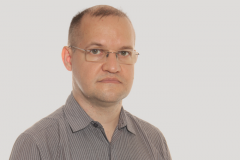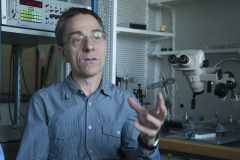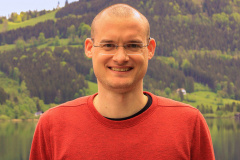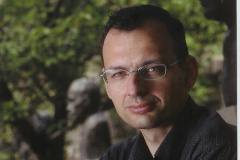Featured Lendület Member: Gergely Róna
Errors in the DNA sequence occur regularly and need to be corrected immediately to maintain normal gene function. DNA repair mechanisms associated with DNA replication are well known, but DNA error repair also occurs in non-dividing cells, about which much less is known. However, many diseases, such as some neurodegenerative diseases, are caused by DNA errors in non-dividing cells. Gergely Róna, head of the MTA-TTK Lendület (Momentum) DNA Error Repair Research Group and researcher at the Institute of Molecular Life Sciences of the HUN-REN Research Centre for Natural Sciences, and his colleagues are investigating little-known forms of DNA repair mechanisms with the support of the Momentum Programme.
Róna has been working on DNA for most of his career. His PhD research mainly focused on DNA metabolism and the nuclear import of nuclear proteins around DNA.
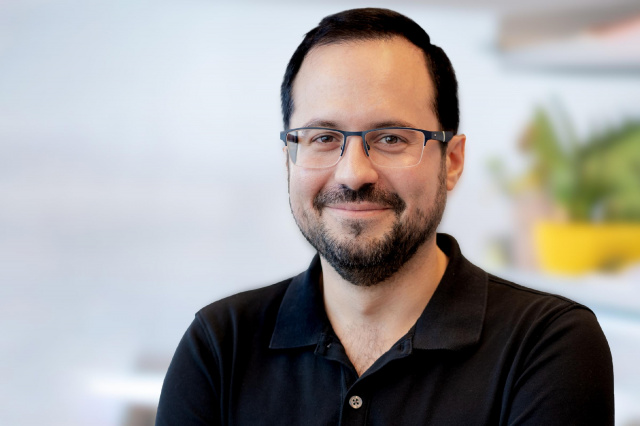 Gergely Róna
Gergely RónaThis brought him to the United States, where for many years he worked on the regulation of the early phase of homologous recombination (one of the mechanisms which corrects errors during DNA copying). This research
has revealed a number of fundamental mechanisms related to cell division and DNA function,
for example, new modifications to histone proteins were discovered which allow cells to carry out homologous recombination much more efficiently.
Cellular regulators of DNA repair processes
While working on this topic in the United States, he became increasingly interested in other error repair processes that may be linked to other phases of the cell cycle. Research into these processes is usually overshadowed by other error repair mechanisms, as they are usually carried out on continuously dividing cell lines. Thus, attention goes to those DNA repair processes that can be linked to dividing cells. Researchers began to investigate how exactly the cell cycle regulates DNA repair processes that do not occur exclusively during DNA replication.
“We started to explore how certain cellular regulators set the exact balance between DNA repair processes and,
surprisingly, found that these mechanisms work in the same way in non-dividing cells,”
says Róna. “Our paper on this is now available as a preprint, and we hope it will be published in print soon. We have seen that what we have shown for G0- and G1-phase cells (Editor’s Note: the phase of the cell cycle before DNA replication) is also broadly true for cell cultures such as neurons, which do not divide at all. This was the idea behind the research topic of my research group in the Momentum Programme.”
The phenomena revealed by Róna and his colleagues may have very important consequences, yet they are hardly researched because they are methodologically very difficult. Most work with classically dividing cells rather than terminally differentiated cell lines. However, in the case of the Momentum studies, the cells will be differentiated, for example, in a neural direction, and from then on they will no longer divide. At the same time, these studies have a great physiological relevance, as the majority of our cells do not divide, so the mechanisms revealed by this research are likely to be of general significance.
Understanding DNA repair mechanisms
The research team leader said that they specialise in highly detailed mechanistic descriptions and are trying to establish these studies in Hungary. This is still a very young field of research, and although they are seeing more and more large laboratories starting to orient themselves in this direction, they still have time to get a firm foothold in the field. The results of this research could also play an important role in explaining the processes underlying neurodegenerative diseases.
“There is growing evidence that pathological proteins underlie many neurodegenerative diseases. But in most of the world’s disease research groups, they concern themselves with the treatment of existing disease. Prevention and early detection receive little attention,” argues Róna. “They are investigating the effects of these protein aggregates on neural function and how they can be eliminated. And this is all very important because these findings can form the basis of clinical treatments.
But the question is always there: why do these abnormal proteins form?”
There is still a lot we do not know about neurodegenerative diseases. For example, why CAG nucleotide triplet expansion, which causes Huntington’s disease, only occurs in neurons and does not appear, for example, in other tissues of the body. There are still only correlative results in this area, but they suggest that the DNA repair mechanisms that the Momentum group will investigate are likely to be behind this. If these processes could be better understood, it would perhaps be possible to intervene therapeutically at a very early stage to prevent the development of nerve damage rather than treating the disease once it has developed. This is where the group’s planned experiments will help.
“In practice, we will mainly differentiate stem cells into various neural lineages, and in the resulting non-dividing neurons we will investigate how exactly DNA repair mechanisms work,” says Róna. “These cells cannot carry out replication-associated repair, yet they can maintain the integrity of their genome very well for many decades. We want to describe the methods they use to do this, which may not exist in dividing cells. Also, at the same time, what goes wrong in them in the case of neurodegenerative diseases, and how might this be targeted with drugs?”
The ultimate goal of the research programme, as a long-term hope, i
s to lay the foundations for procedures that will one day allow neurodegenerative diseases to be treated even before symptoms appear.
For example, in the case of ALS (amyotrophic lateral sclerosis) or Huntington’s disease, one of the phenotypic pathologies is caused by the extension of a long polyglutamate chain of certain proteins. Everyone is born with a specific polyglutamate chain length, which grows throughout a person’s life. When the length of the polyglutamate chain reaches a certain length, it makes a person susceptible to, for example, Huntington’s disease. For those who it is longer at birth, it can reach the problematic size more quickly. “If we knew exactly what causes the continuous lengthening of glutamate in some people’s neurons and could inhibit it, they might never receive a diagnosis of having the real disease,” says Róna. “Obviously, this cannot be the aim of a five-year research programme, nor is it certain that a generation would be enough. But if we could at least start on the road to better understanding the underlying processes, that would also be a great success.”

